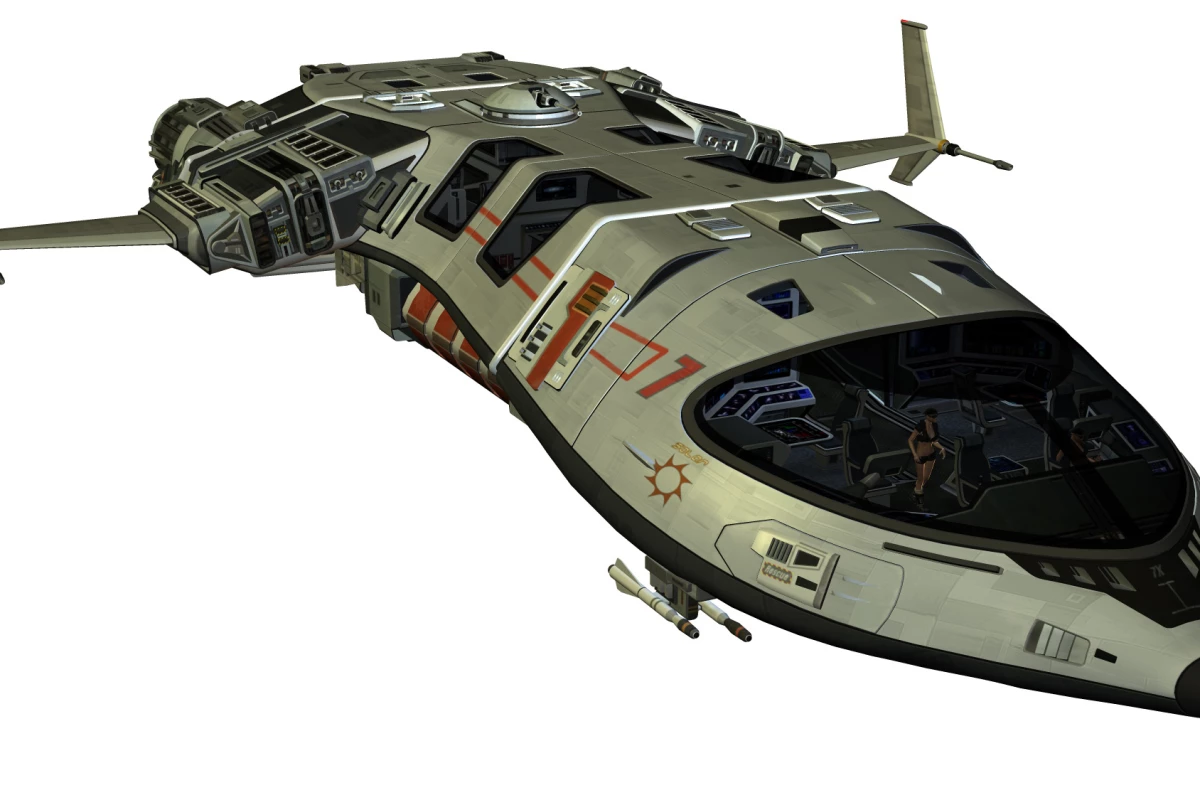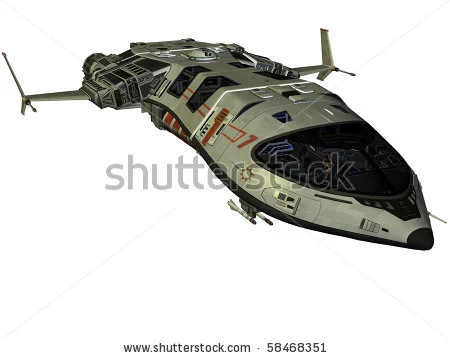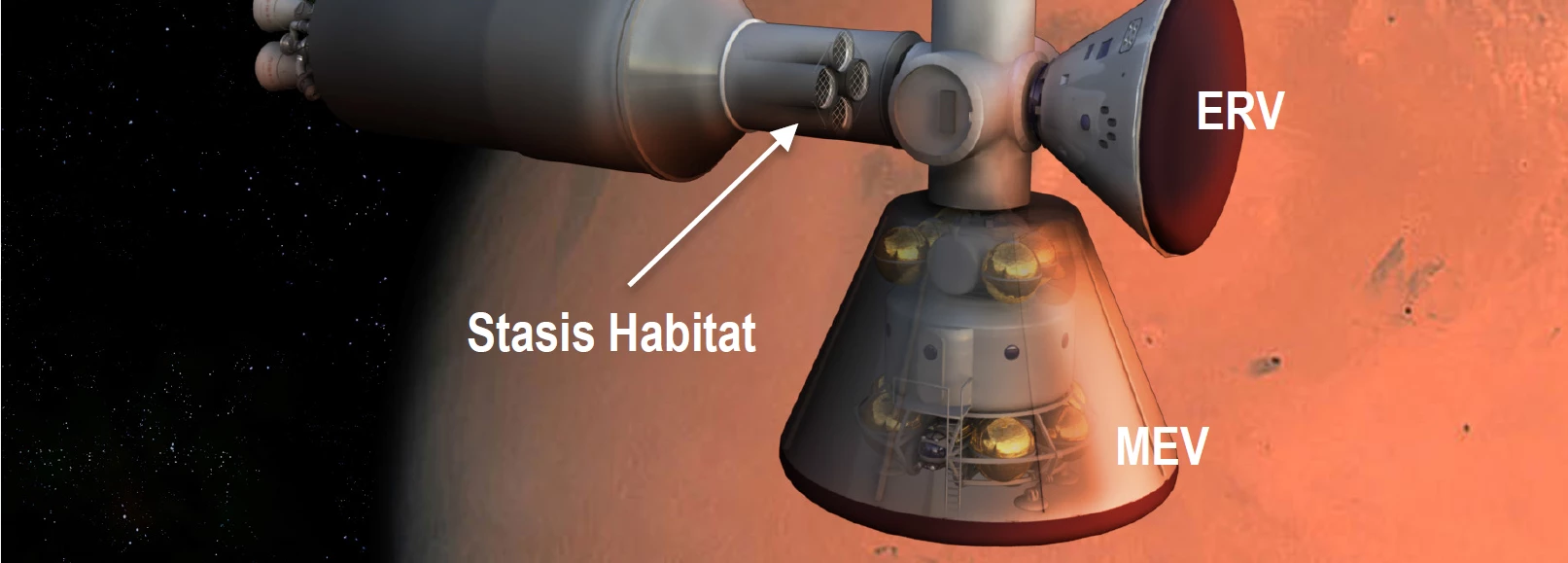A dozen inventors have received a chance to demonstrate the potential for their pet space projects as winners of NASA's 2013 Innovative Advanced Concepts (NIAC) Program Phase I awards. The winners were chosen based on their potential to transform future aerospace missions by enabling either breakthroughs in aerospace capabilities or entirely new missions. Read on for a closer look at some of the most promising proposals with a view to how they would work, and where the tricky bits might be hiding.
Each NIAC Phase I winner receives about US$100,000 to spend a year pursuing their ideas, including an initial feasibility study of a novel aerospace concept. The proposals this year include; 3D printing of biomaterials; using galactic rays to map the insides of asteroids; and an "eternal flight" platform that could hover in the Earth's atmosphere.
- The list of this year's awardees includes:
- Rob Adams of NASA Marshall Space Flight Center – Pulsed Fission-Fusion (PuFF) propulsion system
Let's take a look at three of the most promising concepts with a view to how they would work, and where the tricky bits might be hiding.
Rob Adams' PuFF pulsed fission-fusion propulsion system
The PuFF propulsion system is a new take on an old idea. To confine a deuterium-tritium plasma to act as a breakeven reactor. People have been trying this seriously for half a century and have not yet succeeded. To base a space drive on such a thing would be extremely speculative.

In the PuFF approach, however, the fusion of the deuterium-tritium fuel is only the first stage of the process. Instead of seeking a particular power output, the fusion reaction is being carried out to provide a source of neutrons. This D-T reaction releases a 3.5 MeV alpha particle, and a neutron with 14.1 MeV of kinetic energy.
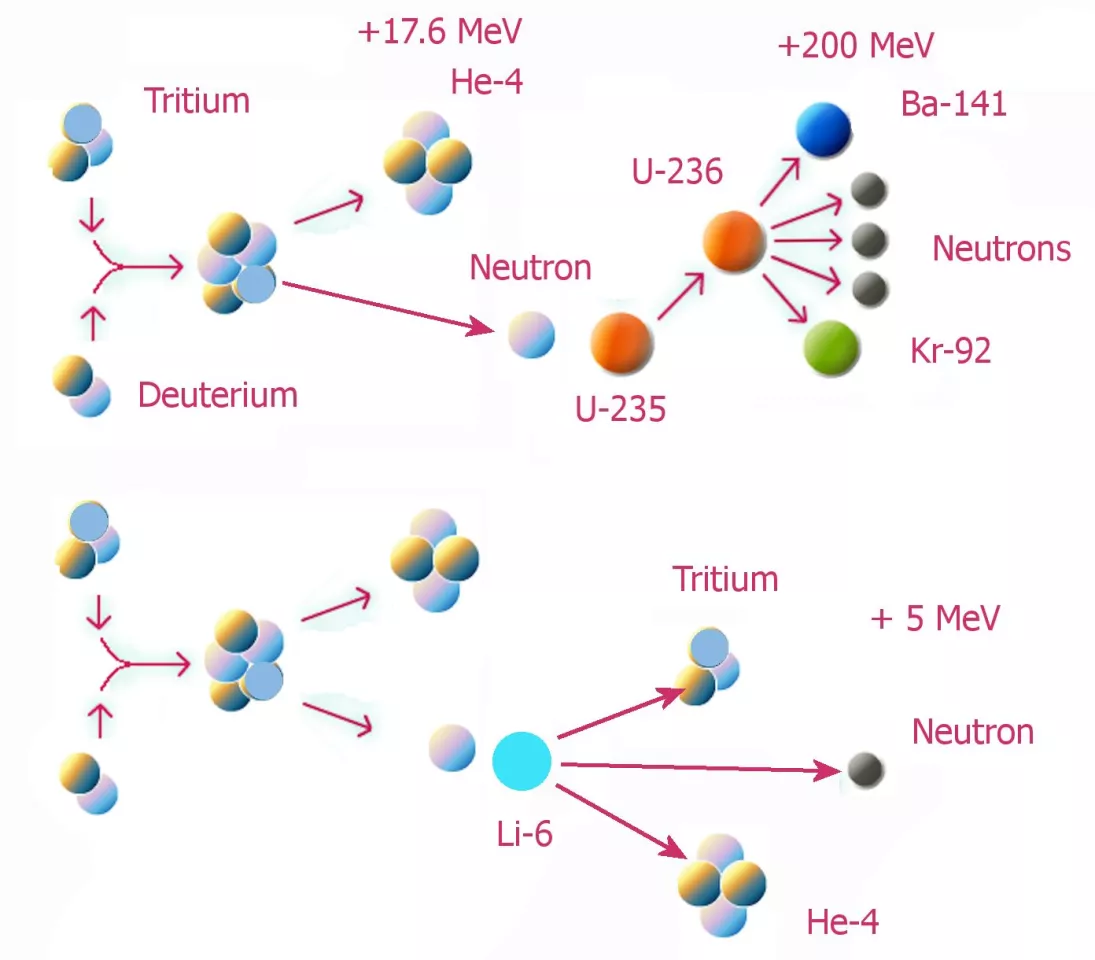
As seen above, in a second stage of nuclear reaction the fusion neutrons can be captured by a uranium nucleus, thereby causing it to fission, releasing some 200 MeV of nuclear energy. Because of the high energy of the fusion neutrons, four to five neutrons will generally be released from uranium fission, rather than the two to three seen with thermal neutrons.
If you send a neutron into a critical mass of fissile material, the resulting chain reaction continues until the critical mass explodes. However, if you have a bit less than a critical mass, the total number of fissions resulting from the input of a swarm of fission neutrons is rather impressive.
Impact of 1,000 fusion neutrons on uranium nuclei will initially cause 1,000 uranium atoms to fission. This will release about 5,000 neutrons in the uranium, owing to the large energy of the fusion neutrons. If the fissile material is one percent away from being a critical mass, some of these neutrons will escape the uranium, but enough will cause fissions that produce 0.99 times 5,000, or 4,950 neutrons. This requires about 1,980 fissions. In the next step, the 4,950 neutrons cause fissions that produce 0.99 times 4,950 neutrons, or 4,900 neutrons, which requires 1,960 fissions.
As the chain goes on, it eventually runs out of steam, as shown by the reduction in the number of neutrons. However, in the course of the not quite critical chain reaction, roughly 200,000 uranium nuclei will have undergone fission. Uranium fission releases about 200 MeV of energy. The original 1,000 fusions that produce the 1,000 free neutrons releases about 19 GeV, but the resulting fissions release about 40,000 GeV. Coupling the fusion neutrons into a not quite critical mass of uranium results in an amplification of the fusion power by a factor of about 2,100, providing plenty of power for a spacecraft drive!
A pulsed drive based on the fusion-fission combination process need not achieve fusion breakeven. Instead, the focus is on fusion-based neutron generation followed by fission-based neutron multiplication. The very largest inertial confinement machines at present produce tens of megajoules per pulse. If the neutron output were directed into a PuFF-type fusion-fission drive, the total nuclear output per pulse could easily be 10 GJ, or about 3 MWh energy release each second – probably 1,000 times the power needed to power a spaceship drive, leaving plenty of room for engineering compromise.
Nathan Jerred's Small-scale Dual-mode Propulsion System
A considerable number of exploratory designs have surfaced, with the common intent of using the nano/pico satellite/probe concept past low-earth orbit. Most of these are single-principle drives, which would be found lacking under some circumstances. For example, a CubeSat might be able to reach velocities required for interplanetary travel using a solar powered ion drive. However, a large number of trajectories would not be feasible because the ion drive does not provide enough thrust for course alteration, course correction, orbital insertion, or other astronavigation challenges.
In such nanoprobes it seems unlikely that two independent propulsion systems can be shoehorned into place while still having adequate performance for interplanetary missions. Jerred's dual-mode propulsion system is a new attempt to address this problem.
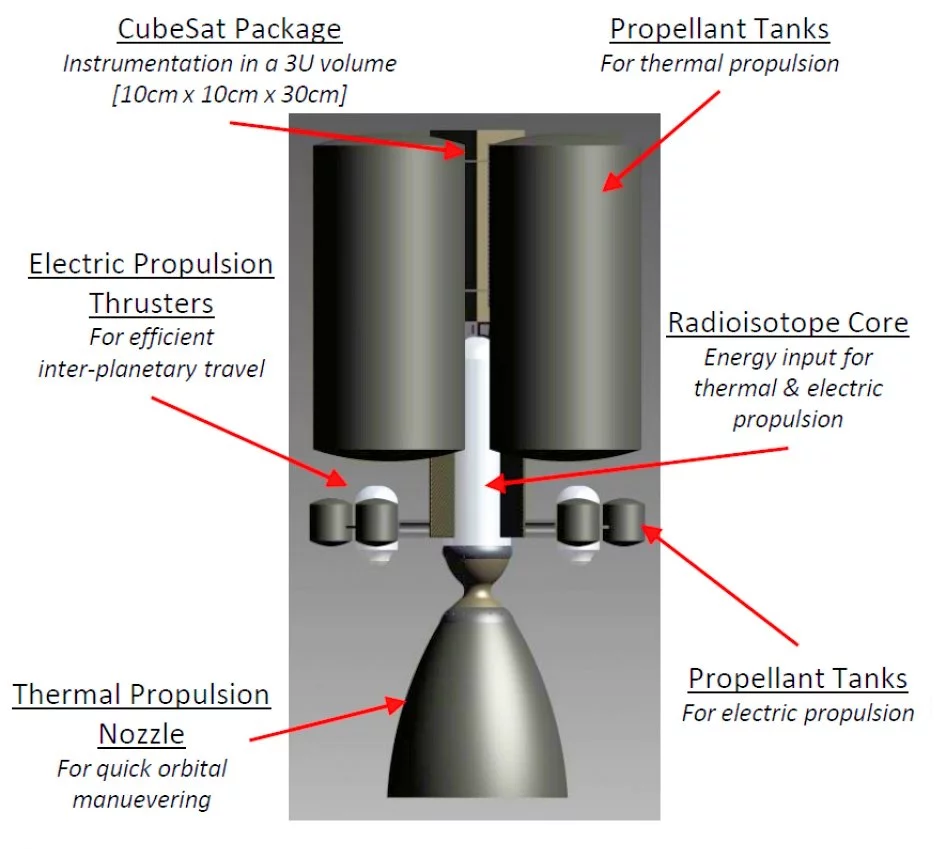
The two modes of which he speaks are a thermal drive and an ion drive. The source of power for both would be radioactive decay, probably of a mass of plutonium 238 (Pu-238). Such radioactive sources have been used in many space missions to provide a heat source for a radioisotope thermoelectric generator (RTG). An RTG powers the Cassini mission, the Mars rover Curiosity, and the New Horizons mission to Pluto.
In Jerred's dual-mode drive, a modified RTG provides power for both drive modes. For the thermal drive, reaction mass in the thermal propulsion propellant tanks is fed through the RTG, therein being heated to about 850° C (1,500° F). This is more than enough to gassify the propellant and generate a high pressure, after which it expands through the nozzle to produce thrust.
Without more engineering information it is very difficult to evaluate how much thrust, but it should be on the order of one Newton (about 1/4 lb). The specific impulse should be in the neighborhood of 300 sec, similar to that of chemical fuels. Running the RTG at a higher temperature is a possibility, which would result in larger specific impulse, but higher temperatures put a strain on the Stirling RTG components.
The second mode of propulsion is the ion drive. In this case, the RTG operates to produce electricity for an ion drive. An RTG that provides 1 kW of heat and about 300 W of electrical power would require about 2 kg (4.4 lb) of Pu-238, the most common isotope used in RTGs. But Pu-238 has a half-life of almost 90 years, which is overkill for, say, a mission to an asteroid or to Mars. If two to three months of propulsive power would be enough for a mission, polonium 210 could be used. It has a half-life of 138 days, and only about 15 g (0.5 oz) would be required to produce 1 kW of heat.
The sample mission for the proposed study is to send a 10 kg (22 lb) payload to Europa. The Phase I study will provide engineering analysis of the major components and look at performance-related compromises which will help determine the feasibility of such a mission. Positive results may lead to an 18 month study that examines the sample mission in more depth.
John Bradford's Torpor to Mars Missions
One problem with space flight at our current state of advancement is that it takes too long. Flight times within the solar system are measured in months or years, during which time astronauts would generally have very little to do, but continue to consume full helpings of food, water, oxygen, and power. Psychologists also suggest that the interminable boredom of long-duration space flights may present substantial difficulties for a crew.
Science fiction has often resorted to inducing suspended animation to avoid these dull periods. The problem with looking to suspended animation for a solution is that humans seem to lack the ability to safely achieve significant levels of hibernation or torpor. Despite this, the profound medical applications that reduced metabolism states could offer have stimulated considerable research on just what causes hibernation, how it differs from torpor, and how it might be induced in mammals without natural access to these states. John Bradford has convinced NASA that it is time to take a serious look for applications in space travel.

The idea isn't to freeze people and thaw/resuscitate people at Mars, or to induce hibernation. True hibernation occurs when an animal allows it's heart rate to drop precipitously, and its body temperature to drop to a few degrees above ambient.
A better model is likely to be a wintering bear. Bears do slow their heart rate to as low as 10 beats per minute (it's normally about 40 when asleep), but only drop their body temperature by about 5° C (9° F). Their long winter sleep is more often called torpor, or winter lethargy. This is the general pattern among the larger mammals which "hibernate." By analogy, people are expected to enter more easily into extended torpor than into true hibernation.
Considerable experimentation has been done in search of triggers for torpor. In the area of drug-like triggers, one study showed rather conclusively that small quantities of hydrogen sulfide in the air would induce a hibernation-like state. Their body temperature fell to about 2° C (4° F) above ambient, and their breathing rate fell by more than 90 percent. Their blood pressure, however, remained high. Researchers have also been able to induce torpor in pigs for several hours without apparent damage.
John Bradford is taking what is known about torpor to perform a "what-if" study. His project will design a torpor module for astronauts on a slow boat to Mars, and will compare the supply and mission requirements for a range of conventional technology assumptions for such missions. This Phase I analysis is only intended to investigate the compatibility of a torpor module with inner solar system voyages. Later in the program, if renewed, he will study how to accomplish the goal of induction and maintenance of torpor in a crew of astronauts.
In the past, it could be argued that the winning concepts of the NIAC program (and its predecessors) have been too mundane and unlikely to push the envelope in unexpected directions. NASA this year seems to have solved that problem. More power to them.
Source: NASA
